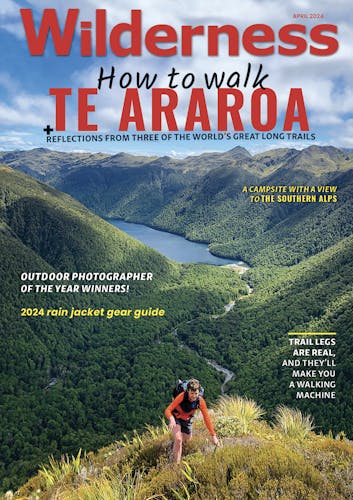In Aotearoa, numerous regulations and bylaws designate the country’s conservation estate into different categories of protection and public recreation. Specific criteria are used to determine whether an area should be a national park or a conservation park. Funding is calculated on the conservation and biodiversity values of the park.
National parks
Aotearoa has 13 national parks, created under the 1980 National Parks Act, to inspire New Zealanders and provide enjoyment and recreation in beautiful, unique and ecologically important scenery.
The designation of land as a national park can only be changed by an Act of Parliament. A national park must be maintained in its natural state, and certain activities are restricted.
DOC land regulatory delivery manager David Griffin said national parks are considered to represent the natural, historical and cultural heritage of New Zealand. They are priceless areas, to be protected for the enjoyment of future generations.
Tongariro National Park was New Zealand’s first. Since the 1970s, conservationists and trampers have been pushing for The Remarkables to join the gold-standard protection rankings.
Forest parks
Forest parks were created under the Forests Act 1949 for the fostering of public recreation and enjoyment. These parks were transferred to DOC when the department was created in 1987, and although they became ‘conservation parks’ under the Conservation Act, the name ‘forest park’ has been retained. The land is subject to protection of its natural and historic resources; however, dogs are allowed in the parks.
Most are in the North Island, such as Tararua and Ruahine forest parks. At more than 2000km2, Victoria Forest Park, on the South Island’s West Coast, is the largest in the country. The smallest is Aotea Conservation Park on Great Barrier Island Aotea (121.10km2)
Over the past two decades, significant areas of high country in the South Island have become public conservation estates, such as the Korowai Torlesse Conservation Park and Ahuriri Conservation Park.
Not all forest parks are on public conservation land. Some are regional parks, managed by the territorial authorities, such as Bottle Lake Regional Park in Christchurch.
Conservation parks
A conservation park is defined by the Conservation Act 1987 as an area of land (or land and water) with predominantly natural systems. It is managed to ensure long-term protection and maintenance of biological diversity while providing recreational and visitor opportunities.
According to Griffin, conservation parks have a lower level of protection than national parks and are used for a wide variety of recreational and commercial activities. There are currently 54 conservation parks in New Zealand (including 36 forest parks), covering an area of 2,690,191ha.








